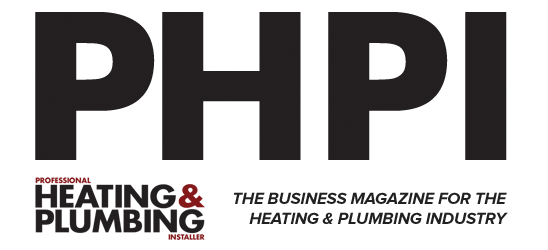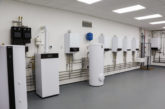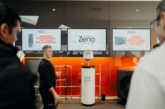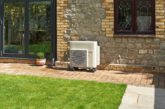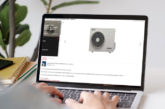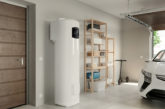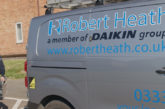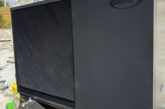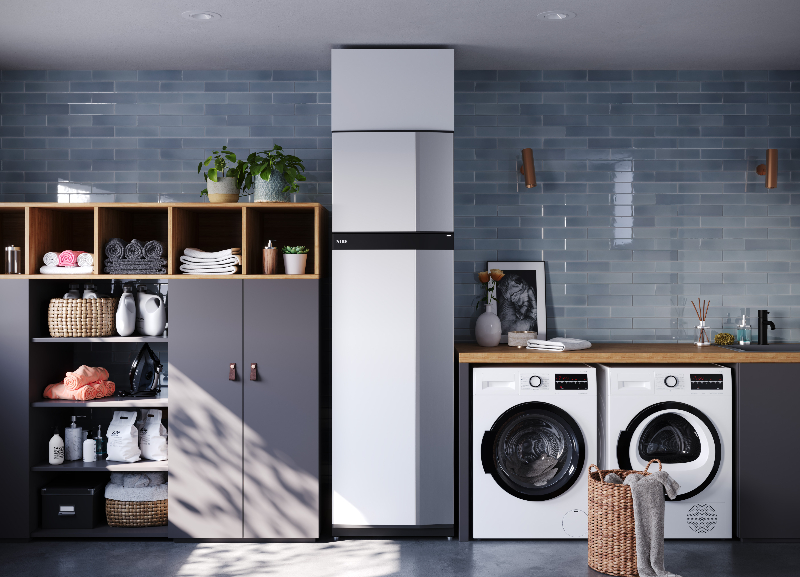
Rick Clarke, NIBE UK’s Product Manager, answers some questions about Exhaust Air Heat Pumps, some of the features of the company’s S735C unit and the controls available with it.
Q. What is an Exhaust Air Heat Pump and how does it differ from Air Source Heat Pumps?
An Exhaust Air Heat Pump (EAHP) is a versatile, all-in-one system that provides heating, domestic hot water (DHW), cooling, and mechanical ventilation from a single, internally installed unit. It works by extracting warm air from inside a building, capturing its thermal energy through a refrigeration cycle, and using it to heat water and indoor spaces before expelling the cooler air outside.
By contrast, an Air Source Heat Pump (ASHP) relies on external air as its heat source and requires an outdoor unit to operate. While both technologies use the same basic principles of heat exchange, ASHPs do not provide ventilation and usually require a separate DHW cylinder. Additionally, ASHP efficiency can fluctuate with outdoor temperatures, whereas EAHPs benefit from a more stable indoor air environment, making them especially efficient in modern, well-insulated homes.
Q. To what types of property is an Exhaust Air Heat Pump best suited?
EAHPs are particularly well-suited to smaller, modern properties that are built with energy efficiency in mind. The most common use cases in the UK include:
– New-build flats and apartments (1-3 bedrooms): These properties often have controlled ventilation requirements and benefit from a compact heating solution that integrates multiple functions into a single unit.
– Small to medium-sized houses: While EAHPs are more common in flats, they can also be used in houses if proper space is allocated for the necessary ducting.
– Retrofit projects: Although EAHPs are most commonly installed in new developments, they can also be retrofitted into existing properties, provided that space is available for ductwork.
The key requirement is that the building has a relatively low heat loss (typically under 6-7kW), and sufficient airtightness to ensure the EAHP operates efficiently.
Q. What are they key features of the S735C Exhaust Air Heat Pump from NIBE?
The NIBE S735C is a compact, high-performance EAHP that combines multiple functionalities into a single unit with a small 0.6m² footprint. Its standout features include:
– Heating up to 6.5kW, ensuring a warm and comfortable home environment.
– A built-in 180-litre domestic hot water cylinder, capable of meeting the daily hot water needs of a typical household.
– Cooling function up to 3kW, providing comfort during warmer months.
– Mechanical ventilation, which ensures a continuous supply of fresh air while recovering heat from outgoing air to improve energy efficiency.
– Smart connectivity via the myUplink app, enabling homeowners to monitor and adjust system settings remotely.
This combination of heating, hot water, cooling, and ventilation makes the S735C a highly efficient and space-saving solution for modern homes.
Q. What controls are available?
The NIBE S-Series smart controls come factory-installed, providing a user-friendly and highly intuitive system. Key features include:
– Wi-Fi connectivity, allowing remote access through the myUplink app.
– A touchscreen interface, making it easy to adjust settings and monitor system performance.
– Smart Room Control (SRC), which utilises AI for better comfort and efficiency.
– Smart Price Adaption (SPA), enabling the system to adjust operation based on electricity pricing, helping homeowners reduce energy costs (offline only).
These advanced controls enhance user experience while maximising the efficiency of the heat pump.
Q. Are there any factors that engineers need to be aware of when installing the S735C?
Yes, proper design and planning are crucial for a successful installation. Engineers should consider the following:
– Heating system design: Like all heat pumps, the S735C requires a well-designed heating system to operate efficiently. This includes correctly sized radiators or underfloor heating to maximise low-temperature efficiency.
– Ducting layout: EAHPs rely on ducting to move air efficiently through the property. A well-designed ducting system ensures optimal airflow and system performance.
– Unit weight and handling: The S735C is a heavy unit that requires a multi-person lift during installation, so careful handling and positioning are essential.
– Electrical and plumbing considerations: As with any heating system, the unit must be correctly integrated with the property’s plumbing and electrical systems to ensure safe and efficient operation.
Proper planning at the installation stage helps to ensure the system runs optimally and delivers the best long-term performance.
Q. Does NIBE offer installer training and what further support is available?
Yes, NIBE offers extensive training for installers, ensuring that heat pumps are fitted and commissioned correctly. In fact, NIBE only sells its heat pumps to trained professionals, ensuring that installations meet the highest standards.
NIBE has dedicated training centres, where installers can gain hands-on experience with its products. These centres provide structured training courses that cover everything from system design and installation to troubleshooting and servicing.
Support available for installers includes:
– Hands-on training courses, both at the NIBE head office training centre and through partner locations.
– The NIBE Pro Akademi offers full MCS level 3 heat pump training for those wanting to become an installer, as well as product training for those who are already MCS certified and want to install NIBE products. Training can also be tailored to those who may have completed a level 3 heat pump course but haven’t got MCS certification yet.
– Online resources and technical guides, providing detailed information about system setup.
– Dedicated technical support, helping with installation, troubleshooting, and performance optimisation.
Q. What kind of maintenance and servicing is required?
The S735C requires routine annual maintenance, like other heat pumps. Key servicing requirements include:
– Cleaning or replacing air filters to ensure unobstructed airflow and maintain energy efficiency.
– Checking the ventilation system to confirm exhaust terminals remain clear and unobstructed.
– General system checks to check pressure, air and water flow rates and control settings, to ensure optimal performance.
Regular maintenance helps to extend the lifespan of the unit and maintain its efficiency over time.
Q. What level of warranty comes with the S735C?
The NIBE S735C comes with a standard 2-year warranty, providing peace of mind for homeowners.
To ensure the warranty is maintained, installers and homeowners need to:
– Use a NIBE-trained installer for the system installation.
– Register the product with NIBE upon commissioning.
– Commit to annual servicing and maintenance to keep the system in top condition.

